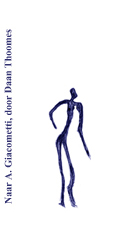After some time, children and adolescents from the same children’s home were presented for psychotherapy with the same label: neglect / attachment problems, but with different behaviour. They were not everyone’s friends; they kept their distance. They were able to play and they did differentiate. However, they were not able to form relationships. In conversations with the adolescents and through observing the children it became clear to me that their core problem was being unable to cope with the proximity of another person. They wanted to be close, very much so in fact, but the anxiety was too great. Their behaviour in relationships showed ambivalence; for example, each time a group leader approached and put an arm around their shoulder, a conflict could be noticed. During sessions they told me about it: I like it but I immediately become frightened. And the children who wanted to sit on someone’s lap but didn’t dare could not understand it themselves: I want to; then why am I afraid?
This behaviour is not disorganised attachment; there is no contradiction to be seen in their behaviour.
In addition to the ambivalent manner of desiring contact /avoiding contact, the behaviour is characterised by withdrawal, passivity and listlessness. There are often expressions of abandonment and disappointment, of anxiety, anger and distrust. These children and adolescents usually speak about themselves in negative terms (I’m stupid, nobody likes me, I can’t do anything, etc) and there are few social contacts. These problems are called relationally disturbed because the problems are experienced mostly in relationships. The treatment of these problems is aimed at closeness and at the negative self-image.
See further: Closeness | Some Figures | Basis Therapy | Courses
